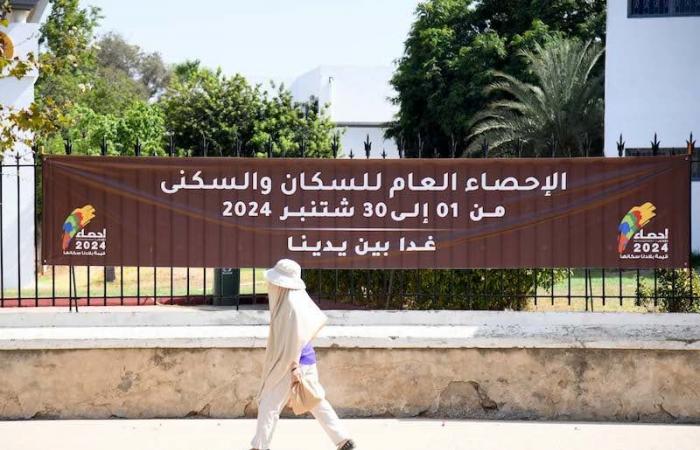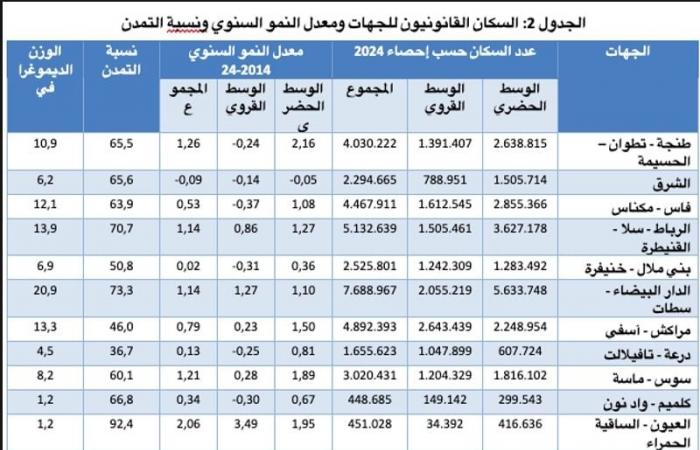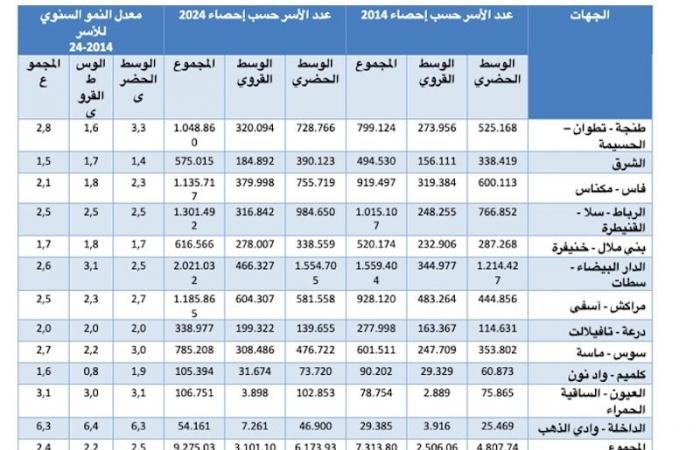The High Commission for Planning revealed the details of the 2024 General Population and Housing Census, which showed a decline in population growth in Morocco, revealing that five regions house more than 70% of the population, and seven major cities attract about 40% of the urban population.
Low population growth
In a memorandum issued today, Thursday, the delegation revealed that the general census for the year 2024 showed a decline in population growth in Morocco, and said that since 1960, the population of Morocco has more than tripled, and thus it has been strengthened by more than 25 million people in the year 2024 despite the continuous decline. demographic growth throughout this period.
According to the delegation, the annual growth rate declined from 2.6% between 1960 and 1982 to 1.25% between 2004 and 2014 and to 0.85% between 2014 and 2024.
She said, “This demographic dynamism is mainly enhanced by the urban center, where the population has increased from about 3.4 million people in 1960 to 23.1 million people in 2024, that is, an increase of 19.7 million people over the year 1960, which is equivalent to an annual growth of 3.04%, while the population in rural areas increased from 8.2 million people to 13.7 million people, with an annual growth rate of 0.8% during the same period.
Five regions house more than 70% of the population
According to the delegation, 71.2% of the population is concentrated in five regions, and the Casablanca-Settat region comes in first place with 7 million and 689 thousand people, accounting for 20.9% of the total population of the Kingdom, followed by the Rabat-Salé-Kenitra region with 5 million and 133 thousand people. Then the Marrakesh-Safi region with 4 million and 892 thousand people, the Fez-Meknes destination with 4 million and 468 thousand people, and the Tangier-Tetouan-Al Hoceima destination with 4 million and 30 thousand people. The rest of the population is distributed among the rest of the regions of the Kingdom, with their number ranging between 3 million and 20 thousand people in the Souss-Massa region, and 220 thousand people in the Dakhla-Oued Eddahab region.
The delegation said, “The demographic dynamism observed between 2014 and 2024 is mainly enhanced by the regions of the Casablanca-Settat, Rabat-Salé-Kenitra and Tangier-Tetouan-Al Hoceima axis, on the one hand, and the Marrakesh-Safi and Souss-Massa regions, on the other hand.” These regions contribute 86.2% of the total population growth between 2014 and 2024, and population growth rates range between 0.79% in the Marrakesh-Safi region and 1.26% in the Tangier-Tetouan-Al Hoceima region.
The rate of urbanization… noticeable regional differences
The delegation confirmed that at the national level, the urbanization rate reached 62.8% in 2024, compared to 60.4% in 2014. The highest rates of urbanization were recorded in the Laayoune-Sakia El Hamra region (92.4%) and Dakhla-Oued Eddahab (80.4%). ) Casablanca-Settat (73.3%) and Rabat-Salé-Kenitra (70.7%). The lowest rates were recorded in the regions of Marrakesh-Safi (46.0%) and Draa-Tafilalet (36.7%).
According to the delegation, the seven largest cities contain 37.8% of the urban population, distributed respectively between Casablanca with 3 million and 236 thousand people, Tangier with 1 million and 275 thousand people, Fez with 1 million and 183 thousand people, Marrakesh with 1 million and 15 thousand people, and Salé with 945 thousand people. Meknes has 562 thousand people, and Rabat has 516 thousand people.
An increase in the number of families with a decrease in the average number of its members
The results of the General Population and Housing Census for the year 2024 showed that the number of families in Morocco reached 9,275,038, including 6,173,930 families in urban areas and 3,101,108 families in rural areas.

According to the delegation’s memorandum, compared to the 2014 census, the number of families increased by 1,961,232 families, i.e. an annual growth rate of 2.4%. By area of residence, the number of families increased by 1,366,187 in urban areas (an annual growth rate of 2.5%) compared to 595,045 in rural areas (an annual growth rate of 2.2%).
Thus, the average number of family members decreased from 4.6 to 3.9 individuals between 2014 and 2024 at the national level, and from 4.2 to 3.7 individuals in urban areas compared to 5.3 to 4.4 individuals in rural areas.








